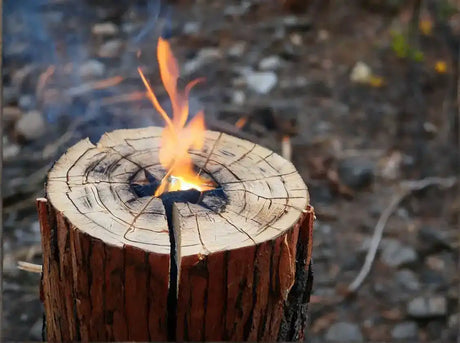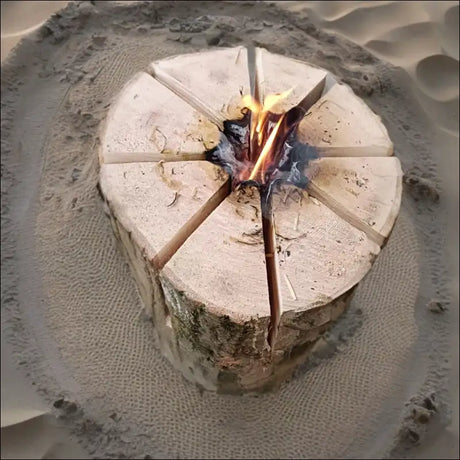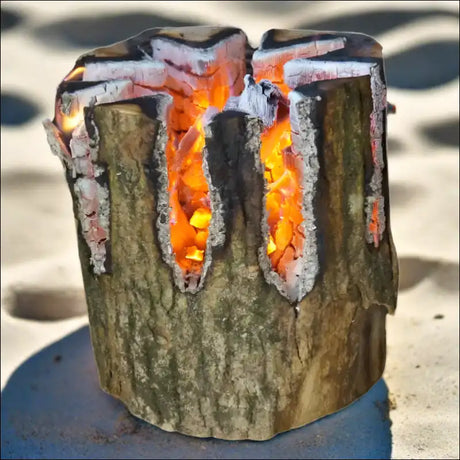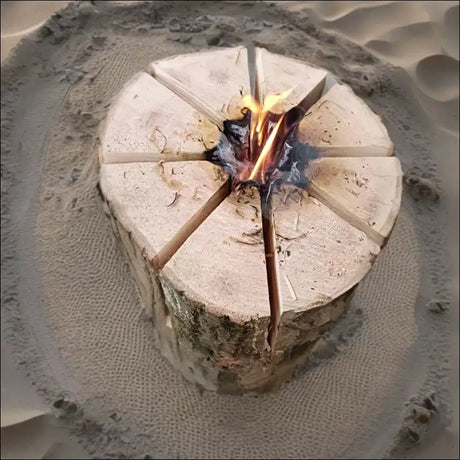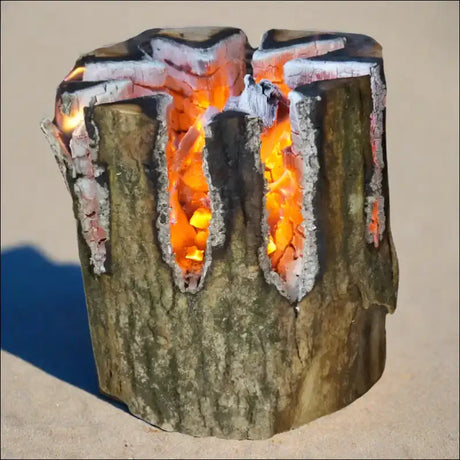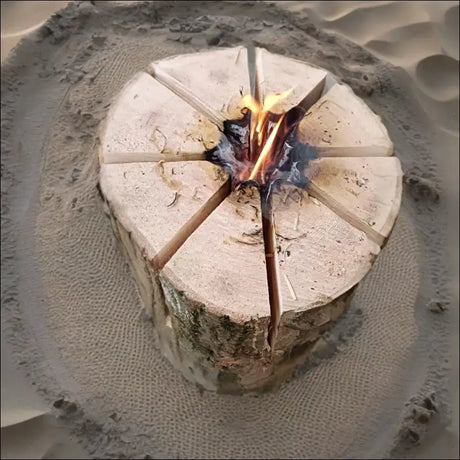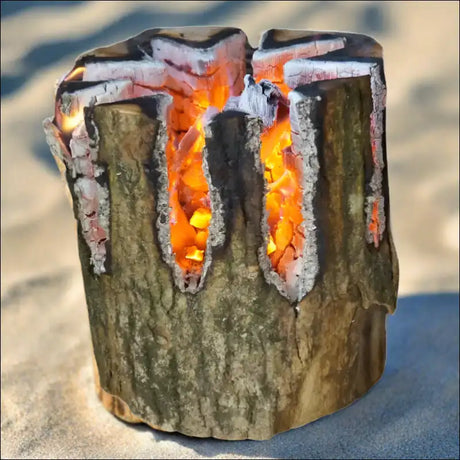If you've ever spent a chilly evening huddled around a lacklustre fire, you'll know the importance of good firewood. It's the difference between a roaring, warm blaze and a disappointing smoulder. But what exactly makes good firewood? Let's unmask this burning question.
Anatomy of Firewood
Firewood has several key anatomical parts that determine its burning characteristics:
Bark The Outer Shell
The outer bark protects the tree. Thicker bark insulates the wood more, resulting in slower burning. Hardwoods like oak generally have thicker bark than softwoods like pine.
Sapwood The First Layer
The sapwood is the younger, outer layers of wood that transport water and nutrients. It burns faster than heartwood.
Heartwood Is The Core of Good Firewood
The heartwood is the older, inner layers that no longer transport sap. It burns slower and longer than sapwood due to its higher density.
Look Carefully At The Growth Rings
The rings visible when you cut the wood indicate years of growth. Tighter growth rings mean denser, slower-burning wood.
How Quickly Assess Moisture Content of Firewood
Dry wood burns better than wet wood. Look for cracks in the ends of logs to indicate dryness. Kiln-dried wood has very low moisture content.
Assessing Firewood Quality
Here are some tips for assessing firewood quality:
- Lift logs to check their weight - heavier logs have higher density.
- Knock pieces together - seasoned wood makes a hollow sound vs dull thud of green wood.
- Inspect log ends - tight growth rings are better, avoid logs with rotten centers.
- Check for cracks in bark and ends - indicates dryness.
- Avoid logs with excessive white mold or fungi.
- Smell logs - fragrant woods like cedar ignite quickly, musty smell means wet wood.
With practice, you can learn to pick quality firewood just by sight, sound, feel and smell!
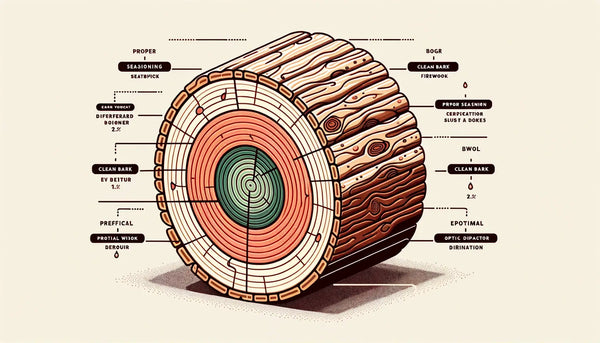
The Golden Trio: Density, Moisture, and Species
Density
In the world of firewood, density is king. The denser the wood, the longer it burns. Hardwoods such as ash, oak, and beech, for instance, are excellent for slow, enduring burns. They're like the marathon runners of firewood. However, softer woods like pine and fir, although less dense, ignite quickly, making them perfect for starting fires. There's a time and a place for both in your firewood strategy.
Moisture
Next in line is moisture. In the game of good firewood, the drier, the better. Wet wood is a party pooper. It hisses, it smokes, and it struggles to burn. Dry wood, on the other hand, catches fire easily and burns efficiently. That's why kiln-dried wood is a popular choice. Kiln-drying draws out the moisture, leaving you with ultra-dry firewood that's ready to burn brilliantly. You can learn more about the benefits of kiln-dried wood in our dedicated blog post.
Species
The last element of the golden trio is the species of the wood. Each tree species has its own burning characteristics. Oak, for instance, burns slow and hot, while pine sparks and crackles, adding a little drama to your fire. The best logs to burn depend on your specific needs. You might prefer the slow, steady heat of hardwood ash logs for a winter's night, or the quick, crackling fire of pine for a summer BBQ.
The Art of Choosing Good Firewood
Choosing good firewood is a bit like choosing a good wine. You need to consider the body (density), dryness (moisture content), and variety (species). And once you've mastered these basics, you can venture into the finer nuances, like the impact of charcoal's impact on beer and spirits, or the art of Swedish torch cooking with fire logs.
Kiln-Dried or Seasoned: Which is Better?
One of the great debates in the firewood world is between kiln-dried and seasoned wood. Seasoned wood is left to dry naturally over time, while kiln-dried wood is dried in a controlled environment. So, is kiln-dried firewood better? The short answer is yes. Kiln-dried wood burns cleaner, hotter, and longer than seasoned wood. Plus, it's ready to burn straight away, so there's no need to play the waiting game.
What if my Firewood Gets Rained On?
But what if your perfectly-chosen, kiln-dried firewood gets rained on? Is all hope lost? Not at all! While it's better to keep your firewood dry, a little rain isn't the end of the world. Just let the wood dry out before you use it, and you'll be back in the warm embrace of a roaring fire in no time. Find out more about what to do if your firewood gets rained on.
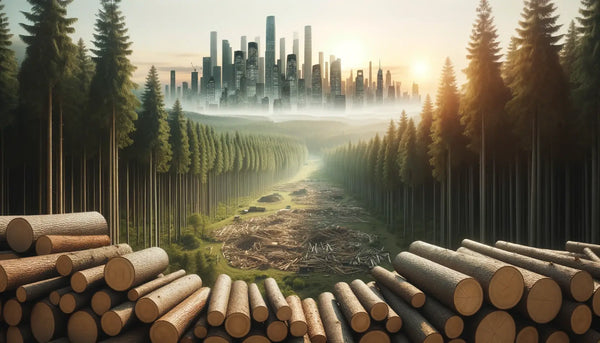
The World Beyond Logs
Good firewood isn't just about the logs. There are other products that can enhance your fire experience. Lumpwood charcoal, for instance, is a BBQ game-changer, providing high heat and a delicious, smoky flavour. Firelighters and kindling can also make starting your fire a breeze.
The Bottom Line
What makes good firewood? It's a combination of the right density, the right moisture content, and the right species. But like any good recipe, the magic is in how you bring these ingredients together. So, don't be afraid to experiment with different types of wood, and find the perfect blend for your fire needs. Whether it's a warm, cosy night in or a summer BBQ, good firewood can transform the experience.
Remember, there's always more to learn about firewood. Check out our burning questions for all your fiery curiosities. Happy log burning!


